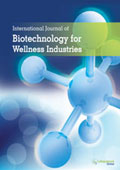ijbwi
Abstract : Current Situation of PC12 Cell Use in Neuronal Injury Study
|
|
Abstract: The nervous system diseases are easy to get and hard to cure. The mechanism is bound up with nervous cells injure, so it’s significant to study medicine protect nervous cells injure. We need find an ideal model to study these diseases. PC12 cell is a pheochromocytoma cell line from RattusNorvegicus, because it has some characters of nerve cells and easy to cultivate and passage, these cells have been proved to be a useful cell model to study nervous physiology and pharmacology. There are several of PC12 cells, American type culture collection supply two kinds of PC12 cell named PC12 cell and PC12Adh. There are high differentiation, low differentiation and undifferentiating in domestic. Although they are very similar, there are still some differences, and not every PC12 cell is effective for every experimental model. After compared, we hold that PC12Adh cell line is more suitable for neurite outgrowth studies under ROCK inhibitor than the PC12 cell line, PC12 cells that induced by NGF and high differentiated PC12 cell are similar to cerebral cortical neurons, they are suitable for various physiological and pathological study of nervous system. Undifferentiated PC12 cells due to low levels of dopamine, therefore it is not suitable for study on neural cells. Keywords: Nerve cells, PC12 Cell, Cell differentiation, Neural injury.Download Full Article |
Abstract : The Edible Mushroom Pleurotus spp.: I. Biodiversity and Nutritional Values
|
|
Abstract: Mushrooms are macrofungi with numerous varieties and widely known as food and medicine in many ancient cultures. They are considered as potential source of many essential nutrients as well as therapeutic bioactive compounds and thus became one of the main components in Traditional Chinese Medicine (TCM) and in Japanese herbal medicine since more than two thousand years. The genus Pleurotus (widely known as oyster mushroom) is fast growing fungus belongs to basidiomycota group and considered as one of the famous species with many health benefits. Nowadays, seventy species of this genus has been discovered, but solely a few of them such as P. florida, P. sajor-caju and P. ostreatus are available in the market. The rich nutrients such as proteins, fibers, carbohydrates, minerals, vitamins, and lipids present this mushroom as famous healthy food. Furthermore, Bioactive compounds such as polysaccharides, proteins and nucleic acid are extracted from various species of Pleurotus tends the researcher to investigate more on this beneficial genus. This work is focused on reviewing the recent work published in the biodiversity and nutritional content of Pleurotus spp Keywords: Pleurotus spp., biodiversity, proximate analysis, nutritional values.Download Full Article |
Abstract : Effect of Myrtle (Myrtus communis) Extracts on Storage Stability of Chicken Frankfurters
|
|
Abstract: The antioxidant and antimicrobial effects of water myrtle extracts (0.25 and 0.50%) were investigated against lipid oxidation (tiobarbituric acid reactive substances – TBARS) and microbial growth in vacuum-packed chicken frankfurters stored at 4±1ºC for 35 days. The effects of this extract on compositional, physicho-chemical and sensory characteristics of chicken frankfurters were also determined. Results showed that water myrtle extracts possess antioxidant (lower TBARS values that remained stable during the 35 days of storage) and antimicrobial properties (lower aerobic plate count) that may make them useful in the food industry. The addition of water myrtle extracts to frankfurters increased red/green and yellow/blue coordinates and decreased lightness values, which could indicate that Myrtus comunnis extract can also acts as a colorant in this type of meat products. Frankfurters with water myrtle extracts were scored similar to controls for overall appearance. Keywords: Antimicrobial, antioxidant, natural extracts, Myrtus comunnis, food preservation.Download Full Article |
Abstract : Bioprocessing of Crop Residues using Fibrolytic Enzymes and Flavobacterium bolustinum for Enriching Animal Feed
|
|
Abstract: Flavobacterium bolustinum and its extracellular cellulase were tested for animal feed pretreatment. The fibrolytic enzymes, cellulase and pectinase were applied to various crop residues such as wheat straw, rice straw, corn seeds and sorghum for enriching animal feed. Different parameters like temperature, incubation time and enzyme dose had been optimized for maximum reducing sugar and protein release. The highest amount of reducing sugar obtained was 29.83 mg g-1 dry substrate and soluble protein was 27.34 mg g-1 dry substrate on single cellulase enzyme treatment at 50°C for 6 h. An increase in amount of released reducing sugar (39.5 mg g-1 dry substrate) and protein (33.88 mg g-1 dry substrate) was observed when enzyme cocktail (cellulose and pectinase) was used. Solid state fermentation using F. bolustinum had also been performed for all crop residues. It released higher amount of reducing sugar (41.36 mg g-1) and protein (47.21 mg g-1) as compared to enzymatic treatment. Different substrates resulted in appreciable weight loss by enzymatic treatment (15-35%) as well as fermentation using F. bolustinum (40%). Liquefaction of lignocellulosic rich crop residues, for better utilization of feed has never been reported earlier. Keywords: Animal feed, Cellulase, Pectinase, Flavobacterium bolustinum, Pseudozyma sp. SPJ.Download Full Article |























